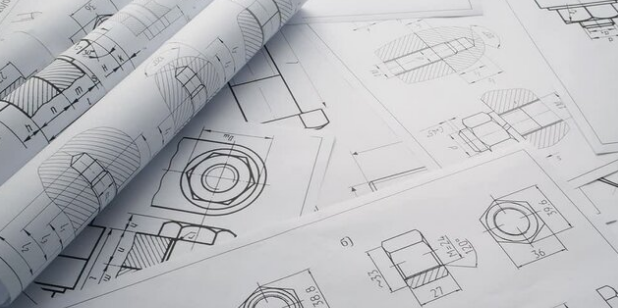Nuclear technology has always represented the frontier of human ingenuity—a field where theoretical physics meets practical engineering to unlock extraordinary possibilities. From the earliest sketches of reactor blueprints in the mid-20th century to today’s sophisticated systems, engineers have been the driving force behind turning nuclear concepts into working realities.
The journey of engineering nuclear systems is one of relentless problem-solving, innovation, and adaptation. With the world now focused on clean energy, climate change solutions, and advanced technologies, nuclear engineering is entering a new era of breakthroughs.
This article explores how engineers transform blueprints into functional nuclear systems, the challenges they solve along the way, and the innovations shaping the next generation of nuclear power.
The Engineering Foundation of Nuclear Systems
The story b
egins with design. Nuclear systems start as blueprints—complex plans that integrate physics, thermodynamics, materials science, and safety considerations. Engineers must ensure that every component, from the reactor core to the cooling systems, works together seamlessly.
Key engineering considerations include:
- Reactor Core Design: Managing neutron flow and fuel efficiency.
- Thermal Systems: Ensuring heat from fission or fusion is effectively transferred to turbines.
- Containment Structures: Designing barriers to protect against radiation leakage.
- Safety Redundancies: Building multiple layers of defense into every system.
What makes nuclear engineering unique is the balance between microscopic physics and macroscopic infrastructure—designing for atomic reactions while also considering power grids, industrial applications, and environmental impact.
From Concept to Construction: Building Nuclear Plants
Turning a nuclear blueprint into reality requires enormous engineering coordination.
- Design Phase: Detailed modeling and simulations ensure feasibility and safety.
- Materials Selection: Engineers develop specialized alloys, ceramics, and composites capable of withstanding high heat and radiation.
- Construction Engineering: Nuclear plants involve some of the most complex civil and mechanical projects in the world.
- Systems Integration: Electrical, mechanical, and control systems must operate flawlessly together.
Every nuclear project is a test of precision and reliability, demanding years of planning and thousands of engineering hours.
Safety Engineering: The Heart of Nuclear Systems
Public trust in nuclear energy depends on safety. Engineers have responded with layered defense strategies:
- Passive Safety Systems: Reactors that cool themselves naturally during shutdowns.
- Multiple Containment Barriers: Protecting the environment even in extreme scenarios.
- Redundant Power Supplies: Preventing failures like those seen at Fukushima.
- Digital Monitoring: AI-driven systems that detect anomalies in real time.
Modern nuclear systems are designed not only to operate efficiently but also to prevent accidents at every stage.
Engineering Breakthroughs: Small Modular and Advanced Reactors
Traditional large-scale nuclear plants are giving way to new designs made possible by engineering innovations.
Small Modular Reactors (SMRs):
- Factory-built for faster, cheaper deployment.
- Scalable—plants can add modules as demand grows.
- Ideal for powering remote regions or industrial facilities.
Generation IV Reactors:
- Molten Salt Reactors (MSRs): Use liquid fuel for higher efficiency and inherent safety.
- Fast Neutron Reactors (FNRs): Recycle nuclear waste into usable fuel.
- High-Temperature Gas-Cooled Reactors (HTGRs): Provide both power and industrial heat.
These designs reflect a major shift from blueprints focused only on electricity to multi-purpose nuclear systems that can support hydrogen production, industrial heating, and grid balancing with renewables.
The Quest for Fusion: Engineering the Impossible
While fission reactors dominate today, engineers are racing to make fusion energy—the process powering the sun—a practical reality.
Engineering Challenges:
- Containing plasma hotter than the sun’s core.
- Developing superconducting magnets for confinement.
- Creating reactor walls that can withstand extreme neutron bombardment.
Global Projects:
- ITER (France): The largest international fusion project in history.
- SPARC (USA): A private venture aiming for net-positive energy in the near future.
- Tokamak Energy (UK): Developing compact spherical reactors.
Fusion represents the ultimate engineering breakthrough—an energy source that is virtually limitless, safe, and carbon-free.
Engineering Waste Solutions: Closing the Nuclear Cycle
Handling radioactive waste has long been one of nuclear’s biggest engineering challenges. Solutions under development include:
- Advanced Recycling: Reusing spent fuel in fast reactors.
- Deep Geological Repositories: Secure underground storage facilities.
- Robotics and Automation: Reducing human exposure in waste handling.
By closing the fuel cycle, engineers aim to make nuclear energy not just powerful but also sustainable for centuries to come.
Digital Engineering: AI, Robotics, and Virtual Twins
Modern nuclear systems are evolving beyond physical blueprints thanks to digital technology.
- AI Monitoring: Predictive analytics detect potential issues before they escalate.
- Digital Twins: Virtual models simulate reactor operations for optimization.
- Robotic Systems: Carry out inspections, maintenance, and decommissioning in hazardous environments.
This digital transformation is allowing engineers to design and manage nuclear systems with greater precision, efficiency, and safety than ever before.
Global Engineering Leadership in Nuclear Systems
Different nations are pioneering breakthroughs:
- USA: Leading in SMRs and private-sector fusion ventures.
- China: Rapidly expanding nuclear infrastructure with advanced designs.
- France: Hosting ITER and pushing forward fusion innovation.
- Russia: Operating advanced fast reactors and exporting nuclear expertise.
- South Korea & Japan: Innovating in safety-focused engineering after Fukushima.
These global projects highlight how nuclear engineering is a truly international effort—one where shared blueprints become global breakthroughs.
From Blueprints to the Future: What’s Next?
Looking forward, engineers envision:
- SMRs deployed worldwide by the 2030s.
- Commercial fusion power within decades.
- Nuclear-powered hydrogen hubs fueling industry and transport.
- AI-driven autonomous nuclear plants ensuring 24/7 reliability.
Each step reflects the engineering journey—from initial design sketches to technologies that could redefine global energy.
Conclusion
The history of nuclear engineering is one of turning ambitious blueprints into revolutionary breakthroughs. From the first reactors to today’s advanced modular and fusion systems, engineers have consistently solved problems once thought insurmountable.
Now, as the 21st century unfolds, nuclear systems are evolving into safer, smarter, and more versatile technologies that may prove essential in building a sustainable energy future. The blueprint has already been drawn—engineers are now creating the breakthroughs that will power generations to come.
Also Read :
